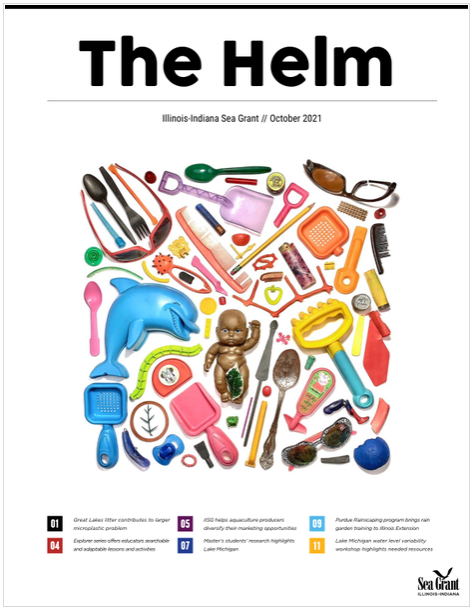
File Size: 5.14 MB
This is an annual summary of Illinois-Indiana Sea Grant success stories.
Flip through the magazine: https://issuu.com/iiseagrant/docs/thehelm-2021

This is an annual summary of Illinois-Indiana Sea Grant success stories.
Flip through the magazine: https://issuu.com/iiseagrant/docs/thehelm-2021
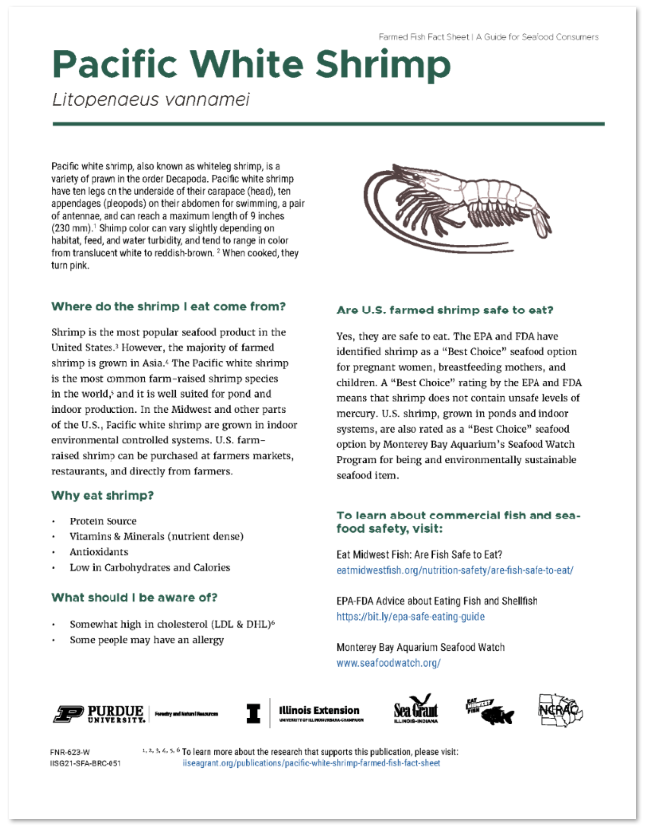
This is the fifth in a series of consumer guides that describe fish and shellfish farmed in the Midwest region of the United States. (See Walleye Farmed Fish Fact Sheet, Yellow Perch Farmed Fish Fact Sheet, and Tilapia Farmed Fish Fact Sheet). The fact sheet also includes culinary characteristics, cooking tips, and a recipe for Sautéed Old Bay® Shrimp
‡Note: Old Bay Seasoning is a registered trademark of McCormick & Company.
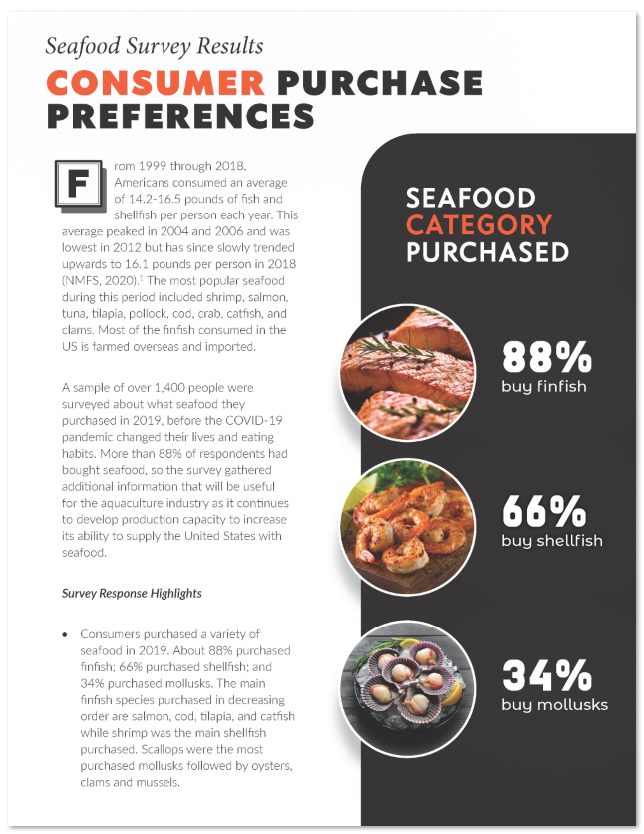
This document provides results of a 2019 national consumer survey of seafood preferences carried out by Illinois-Indiana Sea Grant, Purdue University, Michigan State University, and Southern Illinois University.
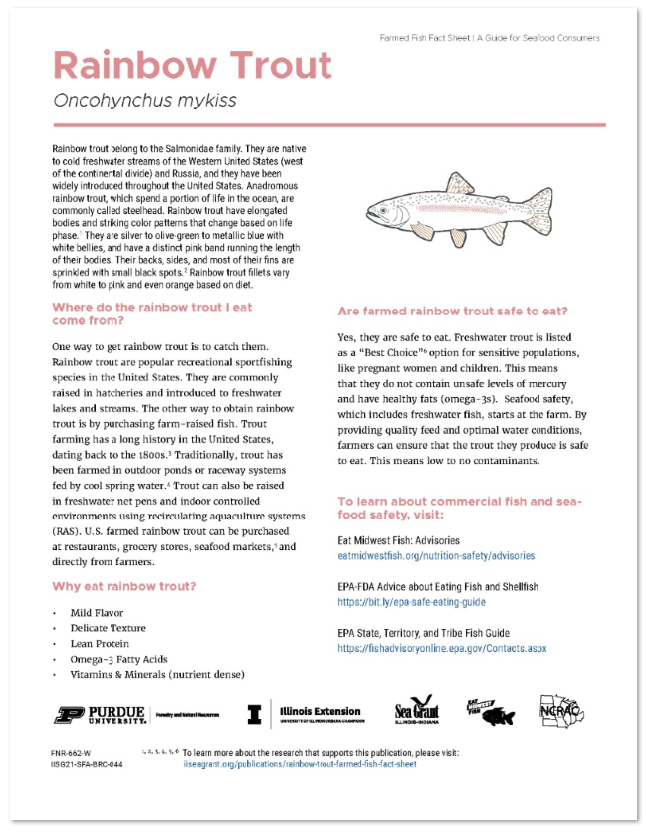
This is the fourth in a series of consumer guides that describe fish and shellfish farmed in the Midwest region of the United States. (See Walleye Farmed Fish Fact Sheet, Yellow Perch Farmed Fish Fact Sheet, and Tilapia Farmed Fish Fact Sheet). The fact sheet also includes culinary characteristics, cooking tips, and a recipe for Grilled Rainbow Trout with Apricot Salsa.

This is the third in a series of consumer guides that describe fish and shellfish farmed in the Midwest region of the United States. The fact sheet also includes culinary characteristics, cooking tips and a recipe for Sautéed Tilapia.
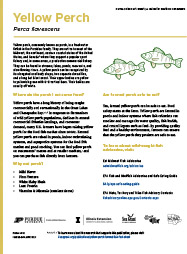
This is the second in a series of fact sheets that describe fish and shellfish produced in the Midwest region of the United States. (See FNR-608-W, Walleye Farmed Fish Fact Sheet.) Yellow perch have been popular among anglers for many years, and since 2002, responding to greater demand, U.S. farmers are raising perch in ponds, aquaponic systems, etc. The fact sheet also includes culinary characteristics, cooking tips and a recipe for Baked Parmesan Perch.
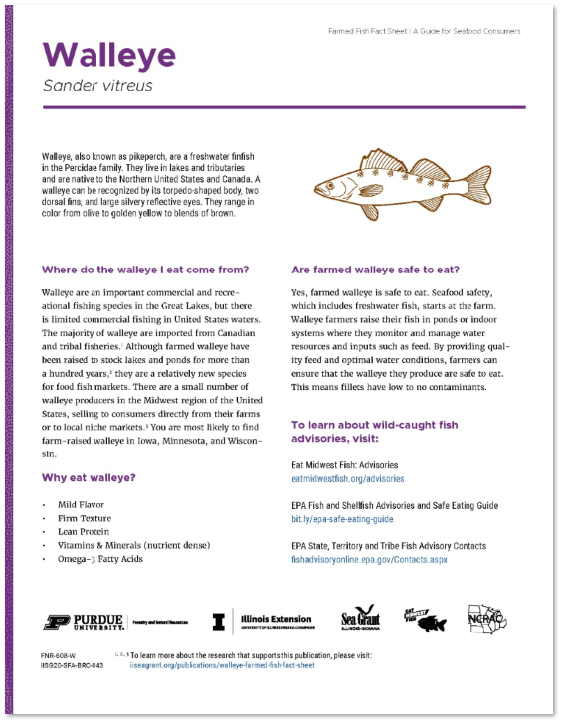
This fact sheet is a consumer guide to farmed walleye. The publication describes walleye, walleye farming, product safety, and culinary characteristics of walleye in addition to cooking tips and a recipe.

The Helm is a collection of recent IISG success stories, describing some of our research, outreach, and education efforts to address coastal and Great Lakes issues in Illinois and Indiana.
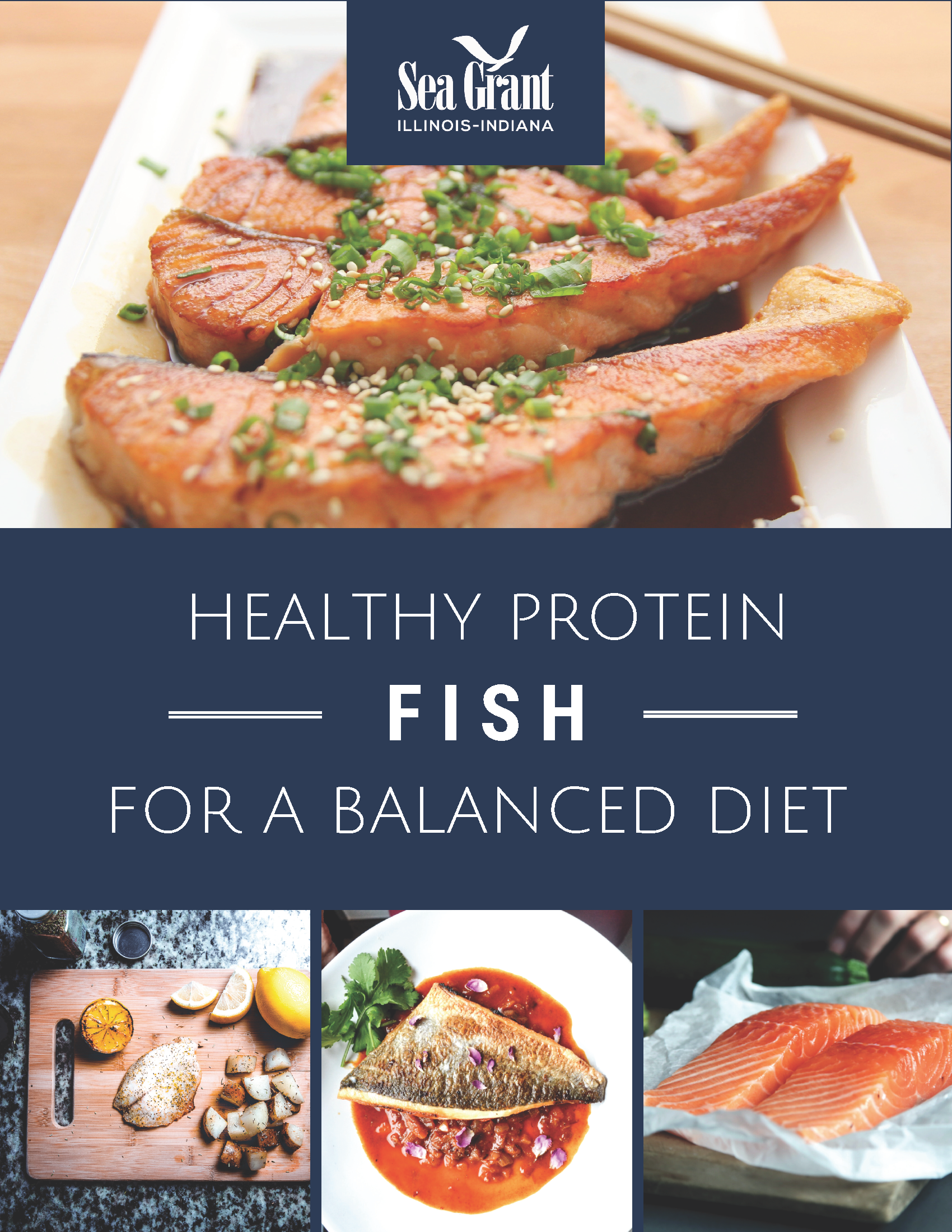
This handout provides information on the nutritional of eating fish for consumers. This handout covers dietary recommendations, healths benefits including fish as a part of a balanced diet, and what to look for when purchasing fresh fish.